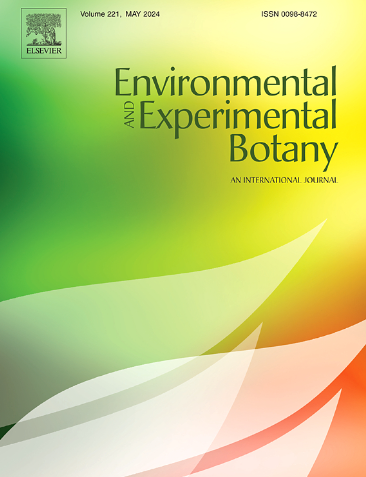Intraspecific trait variation and resource allocation trade-offs under water stress unveil divergent survival strategies in emergent macrophytes amid climate change
IF 4.5
2区 生物学
Q2 ENVIRONMENTAL SCIENCES
引用次数: 0
Abstract
Human-induced climate change threatens ecosystems, with altered precipitation regimes causing extreme events like flooding and droughts that impact plant traits such as biomass allocation (to aboveground or belowground) and reproductive strategies. These shifts reflect plants’ responses to environmental stress, and such changes in macrophyte traits can affect freshwater ecosystem processes such as productivity and nutrient cycles. Examining intraspecific trait variation (ITV) in macrophytes under climate change is critical to predicting freshwater ecosystem dynamics. However, how macrophytes adjust their ecological strategies to varying water availability remains unclear. In this study, we investigated ITV and biomass allocation trade-offs in Limnocharis flava and Pontederia rotundifolia in a greenhouse experiment where individuals were subjected to flooding and drought conditions. We analyzed traits spanning physiology, morphology and phenology. We hypothesized that drought would induce conservative strategies, while flooding would elicit acquisitive strategies with coordinated organ-level trait responses. Our results revealed species-specific strategies. Individuals of L. flava combined drought escape and avoidance with flood escape, allocating biomass belowground during drought and aboveground during flooding. In contrast, individuals of P. rotundifolia showed osmotic adjustment under drought, maintaining metabolism despite water limitation, and a shift toward vegetative reproduction. Under flooding, individuals directed biomass to roots, reflecting drought tolerance and flood escape strategies. These findings highlight the critical role of ITV in plant survival under contrasting environments, emphasizing species-specific adaptations to water stress. Understanding ITV within populations and communities is essential for conserving biodiversity, particularly in vulnerable freshwater ecosystems, as climate change intensifies.
水资源胁迫下的种内性状变异和资源分配权衡揭示了气候变化下新兴大型植物的不同生存策略
人为引起的气候变化威胁着生态系统,降水制度的改变导致洪水和干旱等极端事件,影响植物性状,如生物量分配(地上或地下)和生殖策略。这些变化反映了植物对环境胁迫的反应,这些变化可以影响淡水生态系统的生产力和养分循环等过程。研究气候变化下大型植物种内性状变异(ITV)对预测淡水生态系统动态具有重要意义。然而,大型植物如何调整其生态策略以适应不同的水分供应尚不清楚。本研究以黄颡鱼(Limnocharis flava)和庞特马(Pontederia rounddifolia)为研究对象,在干旱和洪涝条件下进行温室试验。我们分析了生理、形态和物候上的性状。我们假设干旱会引发保守策略,而洪水会引发具有协调器官水平性状反应的获取策略。我们的研究结果揭示了物种特有的策略。黄花L. flava个体将抗旱和抗洪结合起来,在干旱时将生物量分配到地下,在洪水时将生物量分配到地上。在干旱条件下,圆叶杨个体表现出渗透调节,在水分限制的情况下保持代谢,并向营养生殖转变。在洪水条件下,个体将生物量导向根系,反映了抗旱和抗洪策略。这些发现强调了ITV在不同环境下植物存活中的关键作用,强调了物种对水分胁迫的特异性适应。随着气候变化的加剧,了解种群和社区内部的ITV对于保护生物多样性至关重要,尤其是在脆弱的淡水生态系统中。
本文章由计算机程序翻译,如有差异,请以英文原文为准。
求助全文
约1分钟内获得全文
求助全文
来源期刊

Environmental and Experimental Botany
环境科学-环境科学
CiteScore
9.30
自引率
5.30%
发文量
342
审稿时长
26 days
期刊介绍:
Environmental and Experimental Botany (EEB) publishes research papers on the physical, chemical, biological, molecular mechanisms and processes involved in the responses of plants to their environment.
In addition to research papers, the journal includes review articles. Submission is in agreement with the Editors-in-Chief.
The Journal also publishes special issues which are built by invited guest editors and are related to the main themes of EEB.
The areas covered by the Journal include:
(1) Responses of plants to heavy metals and pollutants
(2) Plant/water interactions (salinity, drought, flooding)
(3) Responses of plants to radiations ranging from UV-B to infrared
(4) Plant/atmosphere relations (ozone, CO2 , temperature)
(5) Global change impacts on plant ecophysiology
(6) Biotic interactions involving environmental factors.
 求助内容:
求助内容: 应助结果提醒方式:
应助结果提醒方式:


